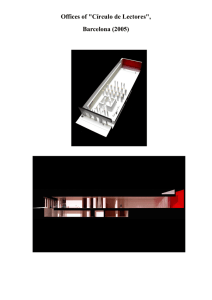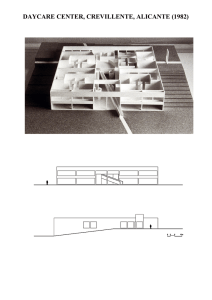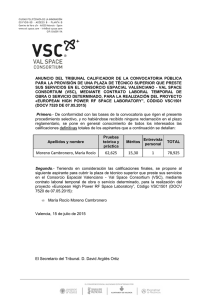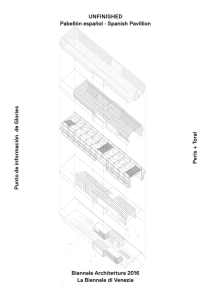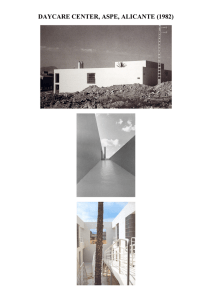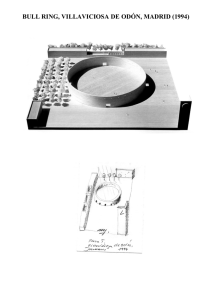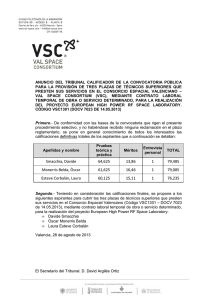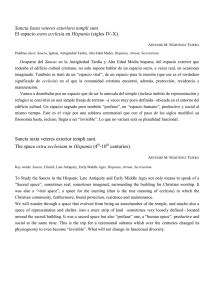Social Housing Viña
Anuncio
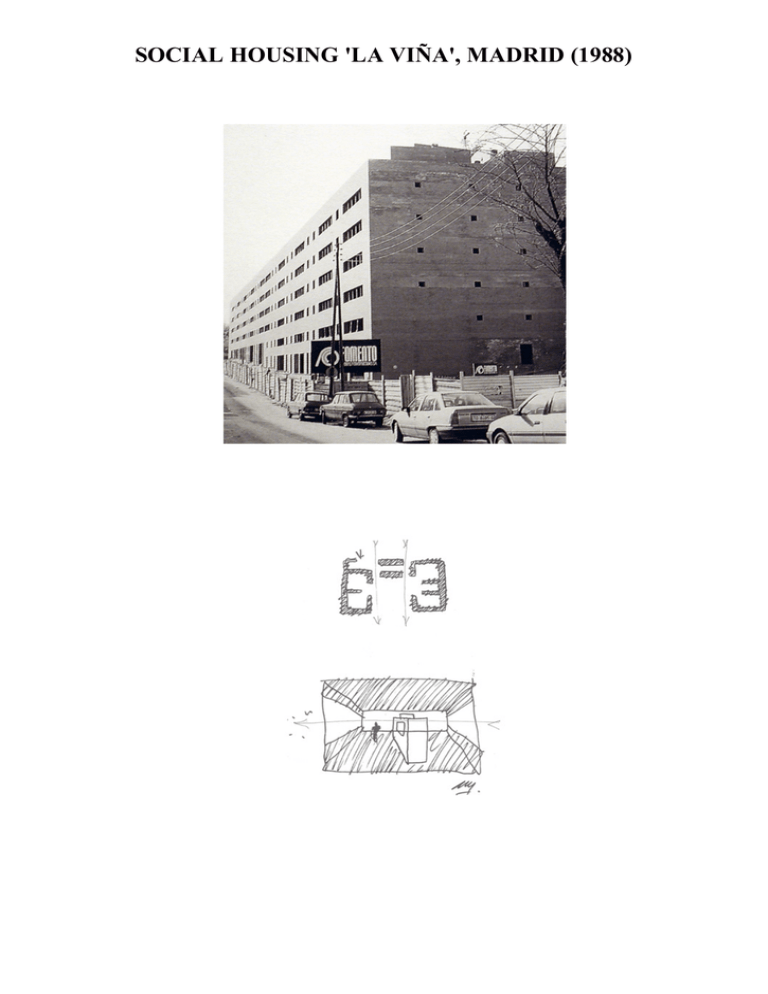
SOCIAL HOUSING 'LA VIÑA', MADRID (1988) Collaborators: Antonio Domínguez Iglesias and Angel Ximénez de Embún. This social housing apartment building, with minimal floor areas, stacked in six storeys, and complying with current codes, is situated on a linear edge looking west to the panoramic view of Madrid. Each apartment is set out as a unified continuous space; a horizontal space with horizontal light, between two parallel facades facing one another, one against the landscape, or street, and the other to the courtyard. The facades open from side to side, and are crossed by both Light and Air, the upper and lower planes, the ceiling and floor, are continuous. A horizontal Light tensing a horizontal Space. The kitchen, the Hearth, is at the center, presiding over the space with out separating it. And to both sides, four articulated pieces paired with the bathrooms mark the cross axis. The geometric mechanism of the double axis underlines the clarity with which the space is controlled. Three of the pieces are bedrooms, the fourth being the connection with the exterior, and the vertical communications. Essential, rational, elemental, and efficient, as if it were copied from a textbook. Almost anonymous, without the signature of an architect. Almost without Architecture, with almost nothing. Essential. More with less. Spanish version > Colaboradores: Antonio Domínguez Iglesias y Ángel Ximénez de Embún. Se proyectan estas viviendas sociales, mínimas en superficie, apiladas en seis plantas, cumpliendo toda la normativa vigente, situadas en un borde lineal que se abre hacia el oeste sobre la panorámica de Madrid. Se resuelven como un espacio unitario continuo, espacio horizontal con luz horizontal, entre dos fachadas paralelas enfrentadas, una al paisaje, o a la calle, y otra al patio. Abiertas de lado a lado y traspasadas por la Luz y por el Aire. Techo y suelo, plano superior y plano inferior, continuos. Luz horizontal tensando el Espacio horizontal. La cocina, el Hogar, en el centro, presidiendo el espacio sin cortarlo. Y a ambos lados, cuatro piezas articuladas dos a dos con los servicios, marcando el eje transversal. El mecanismo geométrico de la doble axialidad, subraya la claridad del espacio controlado. Tres de las piezas son dormitorios, y la cuarta es la conexión con el exterior, con los núcleos de comunicación vertical. Esencial, racional, elemental y eficaz. Como sacado de un manual. Casi anónimas. Casi sin firma de arquitecto. Casi sin Arquitectura. Con casi nada. Esencial. Más con menos.
